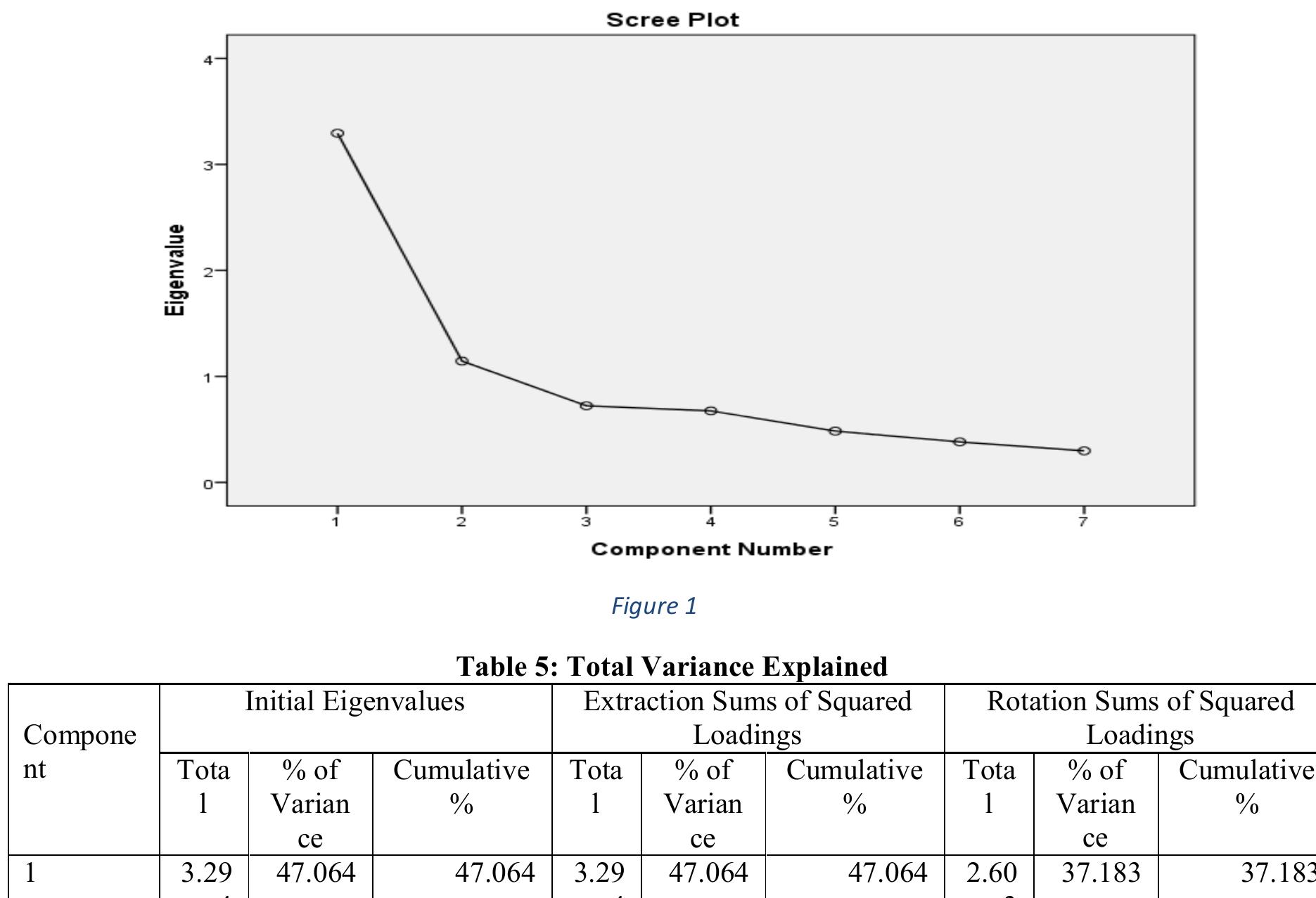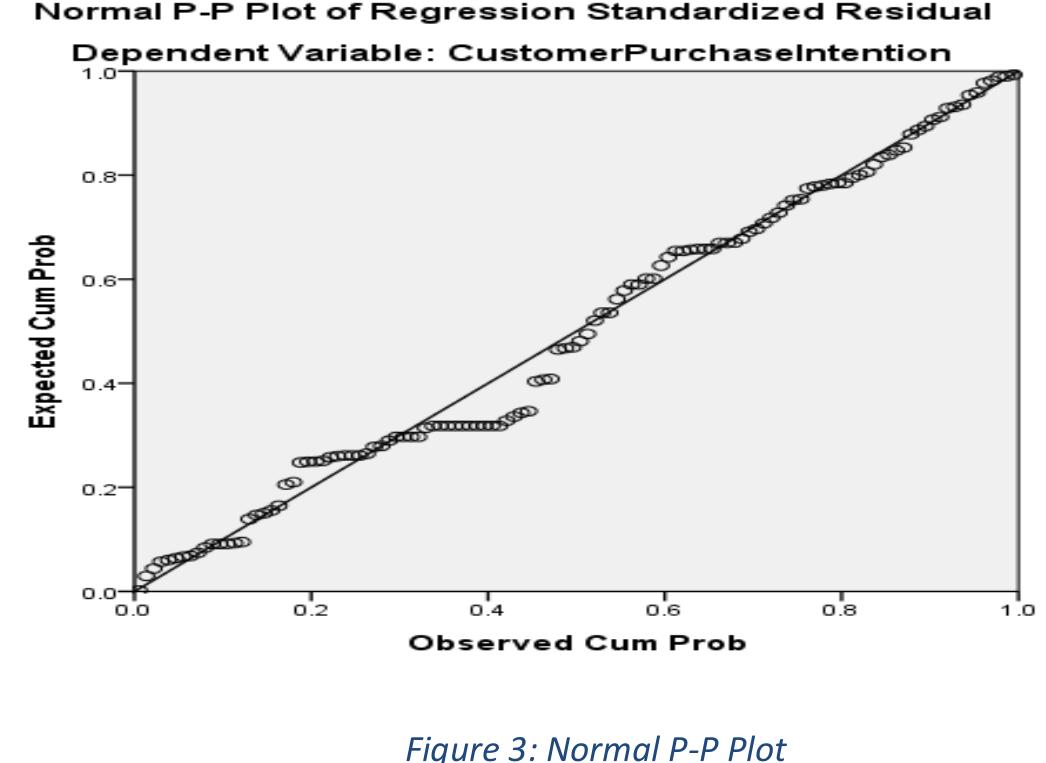The Impact of Social Media Marketing on Consumer Purchase Intention: Consumer Survey in Saudi Arabia (original) (raw)
Abstract
The main purpose of the current research was to find out the impact of social media marketing on the purchase intention of the customers. The study was conducted in Saudi Arabia. It is a quantitative research based primary data collected through structured close ended questionnaire, distributed online. Results were drawn based on 121 responses using factor analysis, ANOVA and regression analysis. The results showed that 92.4% of the customer purchase intention has been explained by Social Media Marketing. The results are statistically significant.
Figures (12)
The main goal of correlation matrix is to check the pattern of the relationship; variables are reasonably well correlated. Table 1 showed that Pearson correlation between the independent variable and dependent variable is strong and positive in nature, that is reflected by the high value of 0.520, which means increase in social media marketing is associated by increase in customer purchase intention and vice versa. There is no problem of Multicollinearity because the determinant is greater than 0.00001. Data analysis and interpretation Factor Analysis
KMO matrix measured the sampling adequacy, acceptable range value of KMO analysis is ‘0.5 and 0.7’, the results in table 2, is 0.796. Besides Bartlett's Test, showed statistically significant results and thus the data is appropriate for factor analysis. The significance of Bartlett’s Test of Sphericity, which is below 0.05 and equals 0.000, showed that the data that have been gathered is suitable and valid.
Journal of Marketing and Consumer Research ISSN 2422-8451 An International Peer-reviewed Journal Vol.56, 2019
Table 5, showed that the first six factors explain large amount of variance specially factor 1, whereas subsequent factors explain only small amount of variance.
The regression model well-fits the data due to that adjusted R square is less than R square with a very small difference, where it equals 0.037. The Durbin-Watson is equal to 1.991 which is between the two critical values of 1.5<d<2.5. Therefore, we can assume that there is no first order linear auto-correlation in our multiple linear regression data. OD. FICQICLOIs. (UONStant), INDAIN TaClOr sCOre =z LOT dildlysis J, INDUIN TdClOr sCOlre = LOT dildlysis 5 ANOVA is analysis to tests the effect of Independent variables on dependent variables, large value of F like what we have in the above value indicate that null hypothesis is wrong, so we reject the null hypothesis of equal population means and conclude that there is a (statistically) significant difference among the population means (Table 8).
_Table 10: Residuals Statistics*
Journal of Marketing and Consumer Research ISSN 2422-8451 An International Peer-reviewed Journal Vol.56, 2019 Fig.l examines the multivariate normality of the dependent variable using histogram, which denotes normal distribution of collected data.
Also using P-P plot, we can check for normality of residuals. Fig. 2 shows that the points follow the normal line with no deviations. This indicates that the dependent variable i is normally distributed. ee a a ae ee eT Os. 48

Loading Preview
Sorry, preview is currently unavailable. You can download the paper by clicking the button above.
References (22)
- Ahmed, M., and Zahid, Z., (2014). Role of social media marketing to enhance CRM and brand equity in terms of purchase intention. Asian Journal of Management Research. 4(3), pp. 533-549.
- Akhtar, N., Tahir, M., and Asghar, Z. (2016). Impact of social media marketing on consumer purchase intention. International Review of Social Sciences. 4(10), pp. 385-394.
- Alhadid, A. and Alhadeed, A., (2017). The impact of social media marketing on purchase intention. International Business Management.11(11), pp.1844-1847.
- Alkaya, A. and Taskin, E (2017). The impact of social media pages on consumer equity and purchase intention: an empirical study of mobile operators. Journal of Business Research Turk. 9(3), pp.122-133.
- Al-Najjar, N., (2017). Luxury in Instagram's Eyes Burberry, Louis Vuitton & Gucci. Published thesis (Master degree). Erasmus University Rotterdam.
- Arceo, P., Buenaventura, M., Cumahig, I., Mesa, M. and Tenerife, J., (2017). The Impact of Social Media Platforms to Online Consumers' Intention to Purchase in Food Industry. In: Proceedings of the Sixteenth Asia-Pacific Conference on Global Business, 21-22 December 2017. Taipei. Taiwan.
- Chandio, Z., Ahmed, S., and Zafar, S., (2015). Impact of social media marketing on consumer purchase intention. IBT journal of business studies.11(11), p.119-129, [online] Available at <http://ibt.edu.pk/ibt/jurnals/7\_ibt.biztek > [ Accessed 19 September 2017].
- Erkan, I. and Evans, C., (2016). The impact of electronic word of mouth in social media on consumers purchase intentions.
- Flórez, L., Escobar, M., Restrepo, A., Botero, D. and Arias, A. (2017). Influence of social networks on the purchase decisions of university students. Metropolitan Technological Institute.18(1), p. 61-84 , [online] Available at http://www.ehu.eus/cuadernosdegestion/documentos/150577lj.pdf [Accessed 17 December 2017].
- Gros., C., (2012). The influence of Social Media on consumers during their purchase decision-making process and the implications for marketers. Published thesis (Master degree). Dublin Business School.
- Kemp, S., (2018). Digital in 2018: World's internet users pass the 4 billion mark; We Are Social [online]. Available at: https://wearesocial.com/blog/2018/01/global-digital-report-2018 [Accessed 5 Dec. 2018].
- Khatib, F., (2016). The impact of social media characteristics on purchase decision: empirical study of Saudi customers in Aseer region. International Journal of Business and Social Science. 7(4), pp.41-50.
- Kim, A. and Ko, E. (2012). Do social media marketing activities enhance customer equity? Journal of Business Research.65(10), pp.1480-1486.
- Li, W. and Darban, A. (2012). The impact of online social networks on consumers' purchasing decision. Published thesis (Master degree). Jonkoping International Business School.
- Medabesh., A. (2015). The impact of electronic advertising on the purchasing of Saudi tourists in Jazan region. Jazan University. 1(1), pp.1-2
- Sano., Kaede. (2014). Do Social Media Marketing Activities Enhance Customer Satisfaction, Promote Positive WOM and Affect Behavior Intention? The Association of Commerce Doshisha University. 66(3), pp.491- 515 , [online] Available at https://doors.doshisha.ac.jp/duar/repository/ir/16742/017066030404.pdf [Accessed 17 December 2017].
- Scarth, M. (2017). The influence of social media communication on South Africa Millennial consumer purchase intentions of motor vehicle brands. Published thesis (Master degree). University of Pretoria.
- Schivinski, B. and Dabrowski, D. (2016). The effect of social media communication on consumer perception of brands. Journal of Marketing Communications. 22(2), pp.1-22
- Sema, P. (2013). Does social media affect consumer decision making. United States: Johnson & Wales University. [online] Available at http://scholarsarchive.jwu.edu/mba\_student/24/
- Toor, A., Husnain, M., and Hussain, T. (2017). The impact of social network marketing on consumer purchase intention in Pakistan. Asian Journal of Business and Accounting. 10(1) , pp.167-199, [online] Available at : https://ajba.um.edu.my/ [ Accessed 19 September 2017]
- Zabadi, A., Abdullah, M. and Dammas, A. (2017). Investigate the influence of social networks site on consumer behavior: applying the technology acceptance model. World Wide Journal of Multidisciplinary Research and Development.3(8), pp.38-49.
- Zhung, B. (2017). Influence of social media marketing brand loyalty and eWOM towards consumer's purchase intention. Published thesis (Master degree). University Tunku Abdul Rahman











